Since then, Sonible have continued to develop the various frei:raum features, which can now be had as a series of three separate plugins: proximity:EQ+, entropy:EQ+ and smart:EQ+. The three plugins complement each other well and can still be bought together as the EQ+ Bundle, but it’s the last one, smart:EQ+, that we’ll be taking a closer look at here.
smart:EQ+ is an 8-band linear phase EQ, and can be used in much the same way as a regular EQ plugin for a variety of sound sculpting and corrective tasks. However, it’s signature feature is a smart mode that can be applied using the middle four bands, and which analyses the incoming signal to calculate an optimised frequency curve that can then be applied to your audio material, subtly smoothing out frequency kinks and unwanted resonances, and simultaneously bringing up softer parts of the signal.
The custom frequency curve can be applied to the analysed sound very quickly and simply if you like the sound of what it’s doing right away, or you can continue adjusting the individual smart bands to finetune the result of the processing, adding more of the effect to certain frequency ranges or even using applying “cuts” on bands to add a negative version of the smart curve, de-emphasising the processing in that area.
The overall idea is that smoother and better spectrally balanced sounds can be achieved quickly and efficiently, using just a few smart controls that semi-automate the process, while also avoiding some of the dangers and side-effects of overly complex corrective EQing applied manually with lots of different settings and adjustments.
So while not exactly a fully “automatic EQ”, the smart filters do indeed promise to take a lot of the manual work out of corrective EQ tasks and favourably open up your individual sounds with rather less effort than you might be used to, and with results that you may not otherwise arrive at by doing everything manually.
It sounds great, in principle – let’s take a look and see how it works in practice.
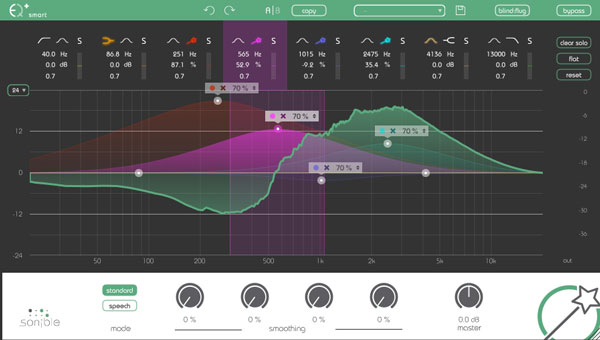
Moving the cursor over each node on the display reveals the current Q width of the band and highlights it’s info pane above.
Interface
The interface has a nice modern design and is fully scalable, making it very fast and easy to read and work with (being able to set a different default size setting would be a nice addition in a future update).
All of the controls and aspects of the interface have a familiar and intuitive quality that makes it very easy to get going quickly, from the EQ frequency graph with its draggable nodes to the colour-coding of the band info sections and their respective curves on the graph.
Should you ever find the attractiveness of the coloured bands a little too distracting, there’s also a button labelled blind:flug that switches the main equalizer graph window to a more old school display with three rotary knobs for each band. This is very useful for those situations where you just want to finetune frequencies and band widths using only your ears – a very welcome feature.
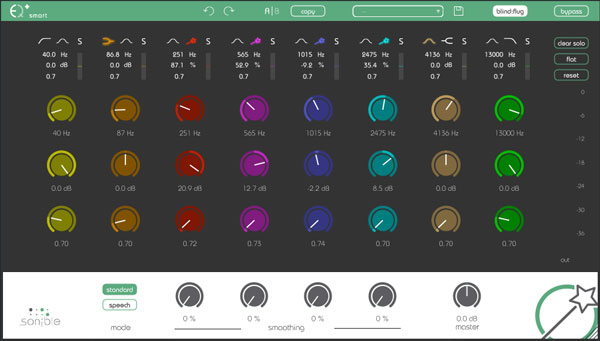
blind:flug display mode shows three rotary controls for each band instead of the flashier graph and nodes.
Smart filters
As well as the regular bell, hi- and low-cut and hi- and low-shelf filter types, the middle four EQ bands can be set to the “smart filter” type, identifiable by the magic wand icon, and which are the core standout feature of the plugin.
With the smart filters activated, playing back your audio with the plugin on an insert allows smart:EQ+ to analyse it and, after a few seconds, create a custom frequency contour from the material. Now, when you adjust the smart filter nodes, you’re pulling up or down this unique contour rather than making a flat, smooth change across all effected frequencies. The result is effectively the same as if each node actually represented a cluster of micro-nodes that are pre-tailored to your audio material: as you make simple cuts and boosts, you’re still maintaining some of the relative difference between neighbouring frequencies around the focus frequency, resulting in more natural, smoother-sounding EQ adjustments.
As you implement the smart curve, there are a couple of other options available in the Master section. Turning up the Smoothing control for each smart band gradually smoothes out the micro peaks and valleys, returning the curve to a more conventional smooth line at 100%. This seems to be partocularly useful for taming and shaping the smart curve in the higher frequencies, where some pre-ringing can occur when making significant smart boosts.
Also in the Master section, you can select from two overall smart filtering modes: standard is optimized for broadband signals i.e. most things from rhythm guitars and synths to full mixes, while speech is the best option for dealing with speech tracks, voiceovers, and vocals specifically.
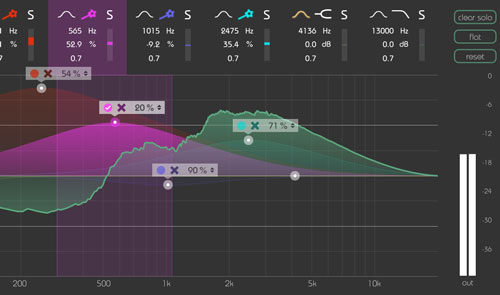
With analysis mode complete after a few seconds of playback, the pause icon is replaced by the checkmark.
In practice
You’d be forgiven for being skeptical at first of any plugin algorithms ability to pre-determine how you want things to sound. But fortunately, we can report that smart:EQ+ really does provide a simple and highly useable way of tweaking sounds and performing surgical EQ adjustments that it might usually take much longer to do manually (using a host of small individual cuts and boosts, which may still not deliver as transparent results as smart:EQ+ can muster).
In fact, it turns out in practice that the smart curves diagnose and deal with problems and imbalances with mixes that are not even entirely identifiable as problems to begin with, making the plugin less of a semi-automatic replacement for some typical donkey work and more of a great addition to any mixers existing box of tools and tricks.
The smart filtering seems to work best on melodic, fairly broadband material such as guitars, synth pads, and vocals. It’s not perfect for every application, tending to typically fare less well with drums and percussion, with some smearing of transients, but only in a way one would perhaps expect from any equivalent linear phase processor.
Aimed at everyone from music producers to mastering engineers and those working in post-production film and broadcast audio, smart:EQ+ could be particularly useful for those short on either time or experience of the finer points of fine-grade EQ adjustments and sound sculpting.
Summary
Smart:EQ+ identifies and addresses resonances and micro-adjustments that it would take much longer to tailor manually or with a regular EQ, resulting in smoother, more polished sounds, faster.
It’s ideal for corrective EQ, quickly finding and taming resonances and frequency clutter, evening out and opening up sounds while generally avoiding undesirable side-effects or inadvertently unbalancing the spectral image. Recommended.
Price: €129 – SUMMER SALE OFFER: €89 until July 21st!
Developer: Sonible
Platforms: PC/Mac (VST/AU/AAX)
Buy now: Plugin Boutique
Alternative options:
Looking for an EQ plugin that perfectly suits your requirements, whether that’s a smooth linear phase mastering equalizer or the best go-to workhorse EQ? Check out our list of 30 of the best EQ Plugins.

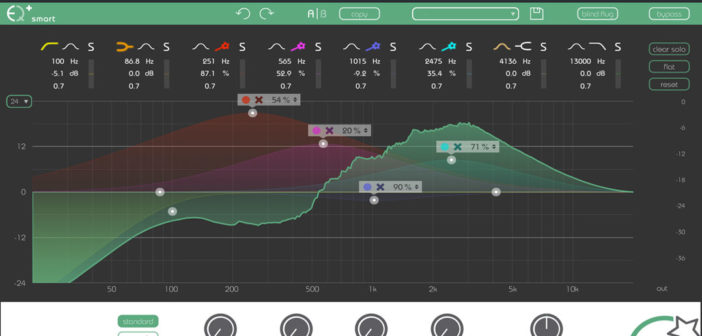

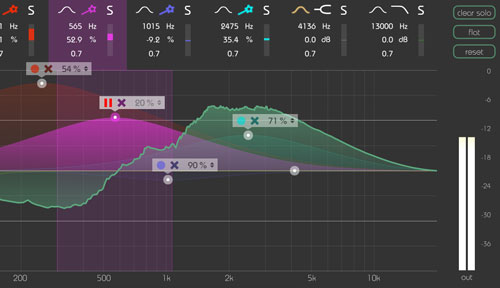
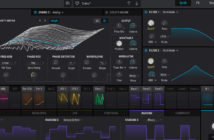

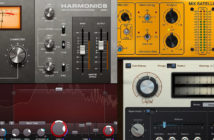
1 Comment
Wow – looks really amazing! Anyone else tried this?